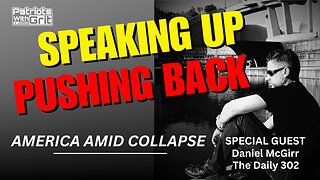Fake Dead Sea Scrolls, Tip of The Iceberg
The Museum of the Bible in Washington, DC, said five of its most valuable artifacts – once thought to be part of the historic Dead Sea Scrolls – were fake
Now the museum is facing a harder truth: All of its 16 expensive fragments are forgeries.
This weekend, at a conference in Washington scrambled by the coronavirus pandemic, experts released a 200-page report revealing how the forgeries fooled scholars and buyers on the antiquities market.
“After an exhaustive review of all the imaging and scientific analysis results, it is evident that none of the textual fragments in Museum of the Bible’s Dead Sea Scroll collection are authentic,” said the leader of the investigation, Colette Loll, the director of Art Fraud Insights, in a statement.
“Moreover, each exhibits characteristics that suggest they are deliberate forgeries created in the twentieth century with the intent to mimic authentic Dead Sea Scroll fragments.”
The findings were originally scheduled to be made public at the Museum of the Bible on Sunday, but the event was postponed.
CNN raised questions about the museum’s Dead Sea Scroll fragments in 2017 as the Green family prepared to unveil their $500 million museum.
Now scholars say the Dead Sea forgeries could be part of the most significant sham in biblical archeology since the “Gospel of Jesus’ Wife,” which hoodwinked a Harvard scholar and made worldwide news in 2012.
Some scholars estimate that as many as 70 forged fragments, purportedly part of the Dead Sea Scrolls, have hit the market since 2002. Revelations about the Green’s collection could raise more questions about ancient biblical artifacts bought by other evangelicals, often for millions of dollars.
Why the scrolls are so coveted
Discovered 70 years ago in caves around Qumran, the Dead Sea Scrolls are among archaeology’s most significant scriptural finds, containing the oldest versions of the Hebrew Bible and other Jewish texts that date to the time of Jesus. Most of the scrolls are kept at the Shrine of the Book in Jerusalem
In 2018, German-based scholars tested the five of the Bible museum’s fragments and said they “show characteristics inconsistent with ancient origin.”
Oklahoma billionaires, the Greens are best-known for their chain of Hobby Lobby craft stores and their religious freedom battle with the Obama administration over covering contraception in company health care plans.
Visitors look at an exhibit about the Dead Sea scrolls at the Museum of the Bible in Washington, DC, on November 14, 2017.
Visitors look at an exhibit about the Dead Sea scrolls at the Museum of the Bible in Washington, DC, on November 14, 2017.
SAUL LOEB/AFP/Getty Images
The news of the forgeries is a significant embarrassment for the new museum, which, at 430,000 square feet in the heart of downtown DC, is a deep investment for its evangelical founders.
Museum leaders portrayed the fiasco as good for museums and the antiquities market.
“The sophisticated and costly methods employed to discover the truth about our collection could be used to shed light on other suspicious fragments and perhaps even be effective in uncovering who is responsible for these forgeries,” said Jeffrey Kloha, the Museum of the Bible’s chief curator, in a statement.
Heather Cirmo, a spokeswoman for the Bible Museum, said Steve Green, the museum’s founder and board chairman, is not commenting on this project, though he is supportive of it. Cirmo said the Bible museum will not release the cost of the tests.
Green has declined to say how much his family spent for the 16 fake Dead Sea Scrolls fragments. Scholars say that similar, authentic artifacts can fetch millions in the antiquities market.
Steve Green, president of Hobby Lobby and chairman of the board of Museum of the Bible, speaks during a media preview of the museum dedicated to the history, narrative and impact of the Bible in Washington, DC, in November 2017.
Steve Green, president of Hobby Lobby and chairman of the board of Museum of the Bible, speaks during a media preview of the museum dedicated to the history, narrative and impact of the Bible in Washington, DC, in November 2017.
How the forgeries were made
The forgers likely used ancient scraps, possibly from archaeological sites around the Qumran caves. But most of the Green’s fake fragments are leather, not parchment like the rest of the Dead Sea Scrolls, according to the report by Art Fraud Insights. The leather scraps could have been bits from ancient Roman shoes, the report speculates.
To make convincing forgeries, the forgers coated the scraps with a shiny amber material, most likely animal glue, to fix tears and match the waxy sheen of authentic Dead Sea scroll fragments, the report says. Remarkably, despite being bought from for different sellers, all were coated by the same amber material, suggesting the forgeries may have come from the same hand.
Among the forgers’ errors, according to the report, was in using modern ink to write snippets from the Bible on the ancient scraps, according to an analysis by German labs. And the writing itself bore clues: letters appeared to follow the creases and tears of the ancient leather, an indication that someone was trying hard to write on the uneven surfaces.
While the ink was still wet, the forgers scattered variety of loose mineral deposits consistent with the Dead Sea region.
“It is our opinion that all of these methods were utilized with the intent to deceive,” the report says.
To confirm the forgery, the six-member advisory team hired by the museum used a superhero-esque array of gadgetry, including 3D microscopes, infrared spectroscopy and “energy dispersive X-ray analysis.”
Dr. Adolfo Roitman presents a part of the Isaiah Scroll, one of the Dead Sea Scrolls, inside the vault of the Shrine of the Book building at the Israel Museum in September 2011.
Dr. Adolfo Roitman presents a part of the Isaiah Scroll, one of the Dead Sea Scrolls, inside the vault of the Shrine of the Book building at the Israel Museum in September 2011.
Where did the forgeries come from?
The report released this weekend doesn’t detail the fake fragment’s provenance, or history of how they ended up in the Green’s hands. It only says the textual artifacts were “purchased on behalf of” the Green family “in four lots from four separate private collectors.”
During a 2017 interview at the Bible museum, Green said he wasn’t sure who sold him the Dead Sea Scroll fragments. “There’s been different sources, but I don’t know specifically where those came from.”
But for years, scholars, including some hired by the Bible museum have expressed doubts about their authenticity.
Kipp Davis, a scholar at Canada’s Trinity Western University, published evidence in 2017 that cast doubt on two Museum of the Bible fragments, including one that was on display when the museum opened in 2017.
One fragment’s lettering squeezed into a corner that wouldn’t have existed when the writing surface was new. Another appeared to have a Greek letter alpha where a 1930s reference Hebrew Bible used an alpha to flag a footnote.
It has been 75 years since the discovery of the Dead Sea Scrolls. There are amazing things we can learn from these mysterious documents. They were discovered in the Qumran region on the northwest bank of the Dead Sea. They were found starting from the year 1947. They were originally written between the 3rd century BC to the first century AD.
I would like to share 10 interesting things about the Dead Sea Scrolls.
Preciousness
Why are they so precious? They are among the greatest discoveries ever in the history of archaeology. They give us a glimpse into the lives of ancient Jews and their neighbors. They help us understand the beginnings of early Christianity. They gave us the oldest manuscripts of the books of the Bible. Over 981 manuscripts with over 100,000 pieces were found in 11 caves in the Qumran. This precious treasure was discovered accidentally when a young Bedouin shepherd stumbled over it in 1947.
Place
Then, look at the place of the discovery. You can see cave number 4 behind me. Over 90 percent of the manuscripts were found in this cave. When the Bedouin shepherd entered the cave, they found the manuscripts in jars. This land, its temperature, its humidity played a great role in their preservation. You can see the magnificent Dead Sea from this place. It has the lowest elevation on Earth and highest saltiness. Because of the high density of this water, you can just lie down on the water on your back and enjoy the views.
Why is the Dead Sea so unique? Look on the shores of this sea. You will see the mountains of Moab. Who was this Moab? He was the incestuous son of Lot. We read in Genesis 19. Lot was Abraham’s nephew. He was living in Sodom and Gomorrow with his wife and two daughters. These twin cities became synonymous with sin and debauchery. The sins of Sodom and Gomorrow were so abominable that God decided to destroy them with fire and brimstone. But God in his grace wanted to preserve the lives of Lot and his family members. When the angels visited them and warned them to leave, they left these sinful cities. But Lot’s wife looked back and turned into a pillar of salt immediately. The salt and asphalt of this Dead Sea also helped the preservation of these documents. The Egyptians took the asphalt from this sea for the mummification of their dead kings and queens. Most likely, the Dead Sea was formed after God destroyed Sodom and Gomorrow. In the near future, archaeologists may find the remains of those cities in this region.
Sodom and Gomorrow…..the judgment of God that came upon those cities. In the excavations carried out in this region, archaeologists found a village that existed in the first century before Christ. In 31 BC, there was an earthquake in this region. In 9 BC, there was a big fire. These events and the history of the destruction of Sodom weighed a lot on the psyche of the people of Qumran.
Take a look at Herculaneum, the ancient town located in Italy far from Qumran. In AD 79, Herculaneum was buried under volcanic ash in the eruption of Mount Vesuvius. Hundreds of people were buried alive in melting lava. Archaeologists excavated many buildings of this town. The most famous of these was a villa called ‘Villa of the Papyri’. Astonishingly, many papyrus scrolls were recovered from this villa.
How did these scrolls survive in the midst of the fire? Ironically, the enormous heat produced from the volcano contributed to their preservation. Similarly, the heat produced by volcanoes, earthquakes and climate conditions in the Qumran region helped in the preservation of dead sea scrolls.
People
Next, who were these people who preserved these documents? They were passionate to preserve the Word of God. They put the scripture and other books in the jars and toiled to come to these mountains. They left these jars inside the caves. They thought that these documents better stay in the caves than in the outer world. They lived through tumultuous times in the history of Israel.
Back in 586 BC, Nebuchadnezzar destroyed Judea and burnt down the temple of God in Jerusalem. The Jews were taken into Babylonian Captivity for 70 years. Then the Persian emperor Cyrus gave a decree which allowed the Jews to return to Judea. In 516 BC, the Jews built the Second Temple. They preserved their scriptures in this temple. But sadly, there was no political unity among the Jewish factions. The Maccabeans and the Hasmonean dynasty brought some peace but that was short lived. After the death of Queen Salome Alexandra in 67 BC, their infighting became worse.
Around the same time, the Romans started to meddle in Jewish affairs. In 63 BC, Roman general Pompey wanted to dominate Judea. When some leaders rebelled, he violently oppressed them. He did not spare even the leaders of the temple of God in Jerusalem. After Judea was subjugated by the Romans, King Herod took control of this region. He built many palaces across Judea. In Masada nearby he built a magnificent palace over a hill. Herod also renovated the Second Temple in Jerusalem.
During this time period, our blessed Savior, Lord Jesus Christ was born in Bethlehem, grew up in Galilee, preached the gospel in Galilee, Judea and Samaria; then crucified, buried and resurrected in Jerusalem. After his Ascension, the Jewish rebellion against Roman occupation became intense. The Romans mercilessly destroyed Jewish homes, synagogues and properties.
In AD 66, Roman Emperor Nero sent his armies to Judea. Around the same time, apostle Paul and apostle Peter became martyrs for Christian faith. Roman general Vespasian, later his son Titus led the charge against Jerusalem. In AD 68, they destroyed the towns in Qumran. In AD 70, they put the temple of God to flames.
Some scholars like Norman Golb think during those turbulent years, some Jews gathered their precious documents from the region and fled to Qumran. They probably wanted to escape the Roman persecution which was rampant in urban areas like Jerusalem. They came to Qumran, settled on the banks of the Dead Sea and made copies of the scriptures and of other important books.
Recently, some scholars have made more shocking assertions. The people who preserved the Dead Sea Scrolls were actually the early Christian Jews or Messianic Jews. For example, Spanish scholar Jose O’Callaghan Martinez identified 7Q5 papyrus of Qumran with a text from the Gospel of Mark, Mark chapter 6:52-53.
7Q5 stands for Cave 7, Qumran, Papyrus 5.
7Q5: Cave 7, Qumran, Papyrus 5
Mark 6:52-53
While the non-Christian Jews put all their efforts to fight the Romans to protect the Second Temple in Jerusalem, the Christian Jews did not fight the Romans. While they valued the Temple, it was not their priority. They probably fled to the mountains with these scrolls. It is highly plausible that Christian Jews gave us the Dead Sea Scrolls.
Whether they were non-Christian Jews or Christian Jews, one thing is clear: They lived a very conservative lifestyle. If you look at the remains of their homes, you will see that they devoted their life to spiritual activities. You can see the bathrooms where they took their ritual baths. You can see the tables on which they copied their manuscripts. Their remains were hidden from the world for over 2000 years.
After the Roman persecution, the Jews dispersed into all corners of the world. In the 20th century, their immigration back to their ancient homeland took momentum. The Arabs who settled in Judea after the Muslim conquests of this region did not welcome the Jews. Violent conflicts broke out between the Jewish returnees and Arabs. Then the Second World War came. After the War, plans to establish a Jewish homeland took shape.
On May 14, 1948 – The nation of Israel was established
Just a month before,
On April 11, 1948 – Formal announcement was made about the discovery of the Dead Sea Scrolls
I find that very interesting. The Dead Sea Scrolls came out just around the time of the formation of a new independent state of Israel. Immediately after its birth, Israel had to fight with its neighbors for its survival. Dead Sea Scrolls went inside the caves while Jews were fighting the Romans. They came out of the caves while they were fighting the Arabs. The motif of war looms large over these documents. The scribes who penned these documents viewed the world as a war between forces of good and of evil, between the light and darkness. And the war followed the documents they left behind. I don’t think that is just a coincidence. I think God brought these scrolls to light just as the new nation of Israel was formed because He wanted to show the world the historicity of the Jewish claim to this region.
Parchments
Behind me you will see the Shrine of the Book. It is a beautiful building that now houses the Dead Sea Scrolls. This is located inside the Museum of Israel in Jerusalem. Take time to visit this place if you come to Jerusalem. Looking at these wonderful ancient treasures of Biblical archaeology would be worth your time.
The most sensational news about the Dead Sea Scrolls is it has all the books of the Old Testament except the Book of Esther. Most of these scrolls were written on parchments made from the skins of sheep and goats. Paper was not known to the world outside China. It was a tedious process. Preparing the parchments from animal skins, mixing the ink, then copying letter by letter under the candle light in the sweltering heat of the place. They wrote mostly in Hebrew, but some in Aramaic and in Greek. Around 40 percent of these Scrolls were the books of the Bible. They are in 225 parts. The rest are commentaries and books which are not recognized as part of the canon.
Before the discovery of the Dead Sea Scrolls, the oldest known documents of the Old Testament were from 10 th century in Christian era. Some skeptics even charged Christians with changing the Old Testament to make sense of their Christian claims. They said, ‘Christians made lots and lots of changes in the books of the Old Testament during the last ten centuries. How can we believe this Bible?’
What happened to the Old Testament before the 10th century AD? Did Christians really corrupt the Bible? There were no answers to those questions for a long time. After the discovery of the Dead Sea Scrolls, we got great answers to those questions.
We got manuscripts of the Old Testament from the second century before Christ. Overnight the date of the oldest manuscripts of the Old Testament moved from 10th century AD to 2nd century BC. So, today we have the Bible from 200 BC, with the age of 2200 years. If you compare today’s Old Testament to this ancient Old Testament, there are no significant differences. The Bible has been preserved to the highest degree humanly possible. The critics who said that Christians intentionally changed the Old Testament have been silenced.
Price
Then the price of these documents. Curiously, when the Bedouin shepherds found these documents, there was not much interest in those scrolls. The shepherds were probably disappointed to see them. There was no gold or silver inside the jars. People who got them wanted to sell them off as soon as possible. We can still see the ads they published in newspapers like the Wall Street journal. ‘Buy these scrolls, they can be a great birthday gift day to a history buff’. They did not realize that what they had on their hands were invaluable treasures from the ancient Jewish world. They were more valuable than gold and silver. In the coming decades, they would fetch millions of dollars in the open market. Their ignorance led to carelessness. Scrolls that had been preserved for over 2000 years faced the possibility of rapid extinction. Finally, in 1991 the Government of Israel took the initiative to preserve them in this special building.
Protection
We should be glad that Dead Sea Scrolls are now well protected in this Shrine of the Book. There are over 15,000 manuscripts here. The Government of Jordan, Christian colleges and universities around the world also possess some of the scrolls. The Bible Museum in Washington DC was deceived into buying some fake Dead Sea Scrolls. Recently, they realized their mistake and made the corrections.
Propulsion
Dead Sea Scrolls became the focus of intense study since their discovery. ‘Really? The manuscripts of the Bible dating back to the time before Christ?’ Prominent historians, archaeologists, theologians rushed to Israel to study them. They excavated around the caves of Qumran and found very interesting facts about the people and the place.
Some of the world’s best scholars devoted their lives to study these scrolls. William F Albright, Yigael Yadin, Geza Vermes, Norman Golb, Jodi Magness to name a few.
Even modern technology came to the aid of the Bible study. NASA’s Jet Propulsion Laboratory invested its infrared technology in the study of Dead Sea Scrolls. This technology that has been useful in understanding objects and phenomena in the outerworld now helps us to make sense of some undecipherable parts of the Dead Sea Scrolls. There are special websites for the study of these scrolls. Go to www.deadseascrolls.org.il to see many of these documents in digital format.
Even DNA technology is being used in the study of Dead Sea Scrolls. We’ve seen that the parchments were made from animal skins. Scientists have been conducting experiments on the DNA fragments of these animal skins to date them and to understand the nature of their preservation.
Preservation
Next, we should look at the contents of the Dead Sea Scrolls. What books of the Bible were preserved? There are 39 copies of the Book of Psalms. Obviously they gave a lot of importance to singing Psalms and praising God.
There are 24 copies of the Book of Genesis. The Book of Genesis is about the beginnings. God created the universe, then specially created the first humans. God called Abraham and made a covenant with him. The people of Qumran saw themselves as inheritors of this covenant.
There are 18 copies of the Book of Exodus. It shows us how the people of Israel were enslaved in the land of Egypt, how God sent his servant Moses to liberate them, how God led them through the wilderness and gave them his Law at Mount Sinai.
Then there are 33 copies of the Book of Deuteronomy. 33 copies. This Book is all about God’s covenant with Israel and His commandments they must follow as they live in Israel. The people of Qumran took the Laws and Commandments of God with utmost seriousness.
Prophecy
Dead Sea Scrolls also gave a lot of importance to the books of prophecy. There are 22 copies of the Book of Isaiah, 8 copies of the Book of Daniel, 6 copies of the Book of Jeremiah, and 6 copies of the Book of Ezekiel.
My favorite is the Great Scroll of the Book of Isaiah. It was found in cave number 1 in the year 1947. It is the oldest manuscript of the Book of Isaiah.
It puts to rest the modern myth that there were 3 Isaiahs. It is one complete book by one Isaiah as its author. It was written over 17 parchments.
The people of Qumran realized the significance of the Book of Isaiah. It speaks about God’s covenant with Israel, about God’s righteousness in his dealings with humanity, God’s judgments over sin, and God’s promise of a Messiah and a glorious future kingdom of Israel.
The Book of Isaiah is also the source of many Messianic prophecies.
The Messiah would be born of a virgin (Isaiah 7:14)
He would preach the good news of God (Isaiah 42:1-4)
He would be crucified, buried and resurrected (Isaiah 53)
He would usher the kingdom of God (Isaiah 2:1-4)
He would bring Golden Age to Israel (Isaiah 1:24-27)
He would be a blessing to the whole humanity (Isaiah 49:5-6)
We have seen how the specter of war hanged over the Dead Sea Scrolls and their authors throughout history. But the Messiah will bring peace to our world. Under His rule, there will be no more war and destruction.
Promise
Finally, we see the promise of God. From a secular point of view, these scrolls give us a glimpse into the ancient world and circumstances around the birth of Christianity. But let us not miss the forest for the trees. Step back and take a panoramic view of these ancient documents.
God revealed these documents to a few shepherds. I don’t think that was accidental to God. Two thousand years ago, God revealed the news of his Son to a few shepherds. God promised that He would preserve His Word at any cost. Empires came and gone, kingdoms came and gone, kings and queens came and gone, and there were famines, battles and wars. Yet, God preserved His Word for us. We see God as our Great Shepherd faithfully preserving His Word for us.
Two thousand years ago, Lord Jesus Christ, his disciples and apostles preached the Word of God from the Old Testament. Dead Sea Scrolls show us the fact that God preserved that Old Testament for us. They show the trustworthiness of the Bible.
Next, the people of Qumran lived a life of separation from the world. Their beliefs, practices, lifestyle were distinct from the surrounding cultures. Some historians think that even John the Baptist was influenced by them. As you know, John the Baptist lived a life of separation from the world and preached a gospel of repentance to the masses. ‘Repent of your sins, turn to God and live a life consistent with the righteousness of God’. The people of Qumran emphasize the truth that God’s people must live a distinct life from the surrounding cultures.
Next, the people of Qumran wanted to preserve the Word of God at all costs. They thought that the Word of God was the most important treasure to bequeath to the next generations. The Roman emperors were busy extending their power, Herod was busy in building new palaces, the priests in Jerusalem were busy in making more money, but the people of Qumran put all their energies in preserving the Word of God.
-
 1:06:35
1:06:35
Patriots With Grit
5 hours agoSpeaking Up, Pushing Back | Daniel McGirr
22.5K5 -
 56:19
56:19
Total Horse Channel
2 days ago2024 Buckeye Reining Series | Saturday Night | 7:30 pm EST
19.1K2 -
 1:15:38
1:15:38
Steve-O's Wild Ride! Podcast
2 days ago $0.22 earnedG Eazy Opens Up About Falling Off - Wild Ride #217
32.2K12 -
 18:44
18:44
We Profit with Stock Curry
6 days agoUltimate Advice for Teens & Young Adults
37.2K13 -
 LIVE
LIVE
Lofi Girl
1 year agoSynthwave Radio 🌌 - beats to chill/game to
194 watching -
 21:00
21:00
Mr. Build It
23 days ago3 Ways to Build Garden Beds
33.6K14 -
 1:42:14
1:42:14
Jewels Jones Live
1 day agoDETRANS w/ special guest Mary Margaret Olohan | A Political Rendezvous - Ep. 78
39.7K21 -
 1:36:46
1:36:46
Roseanne Barr
1 day ago $73.82 earnedFor Love of Country with Tulsi Gabbard | The Roseanne Barr Podcast #50
155K430 -
![[D2] Rumble Featured!! Lets Go!!! #RumbleTakeOver](https://hugh.cdn.rumble.cloud/s/fw/s8/1/5/g/l/6/5gl6r.0kob-small-D2-Onslaught-Grind-w-Some-P.jpg) 6:28:15
6:28:15
CHiLi XDD
13 hours ago[D2] Rumble Featured!! Lets Go!!! #RumbleTakeOver
47.5K7 -
 2:45
2:45
Chicks in the Office
12 hours agoHolly Madison Talks Reconciliation with Kendra Wilkinson
61K38